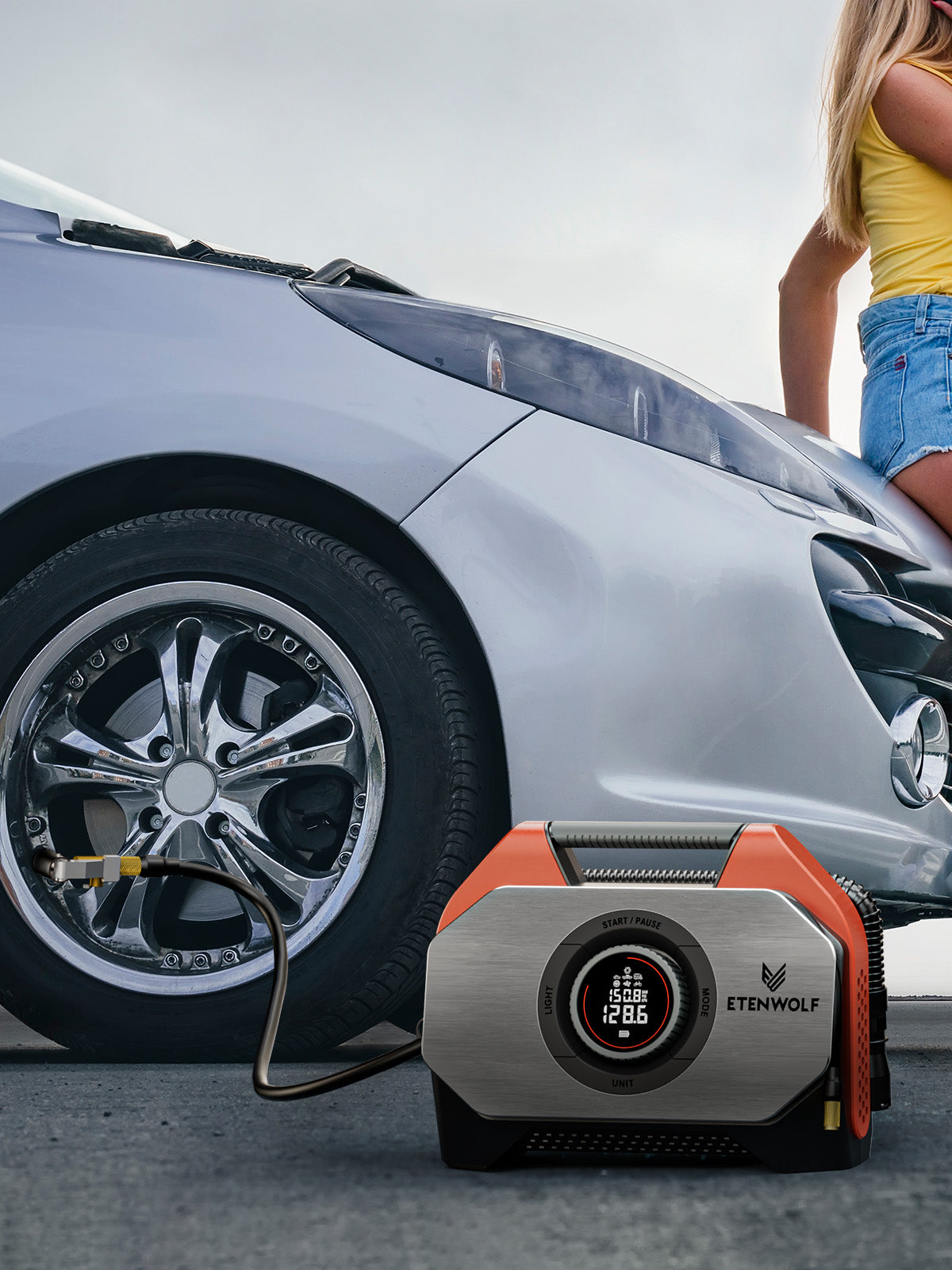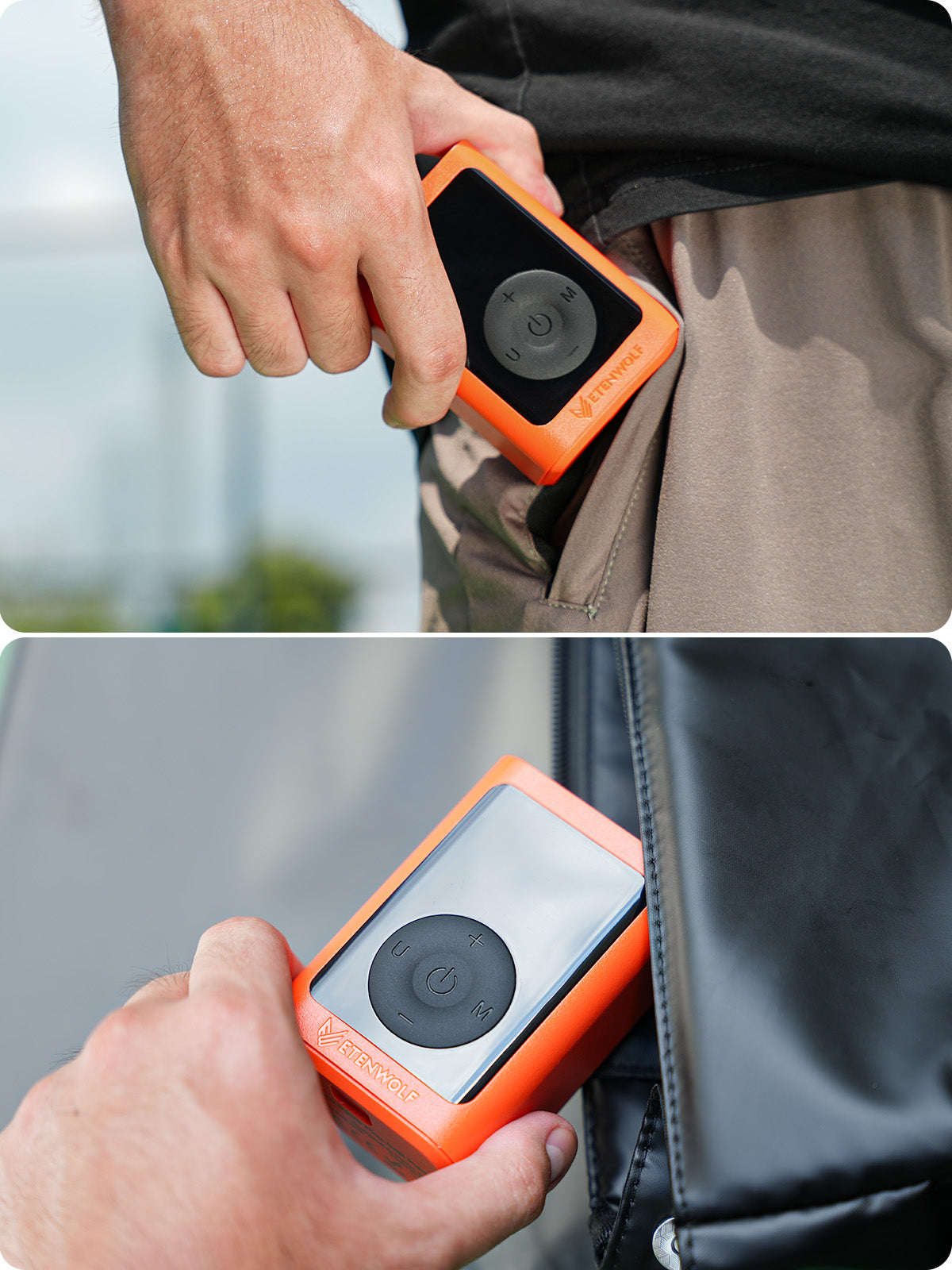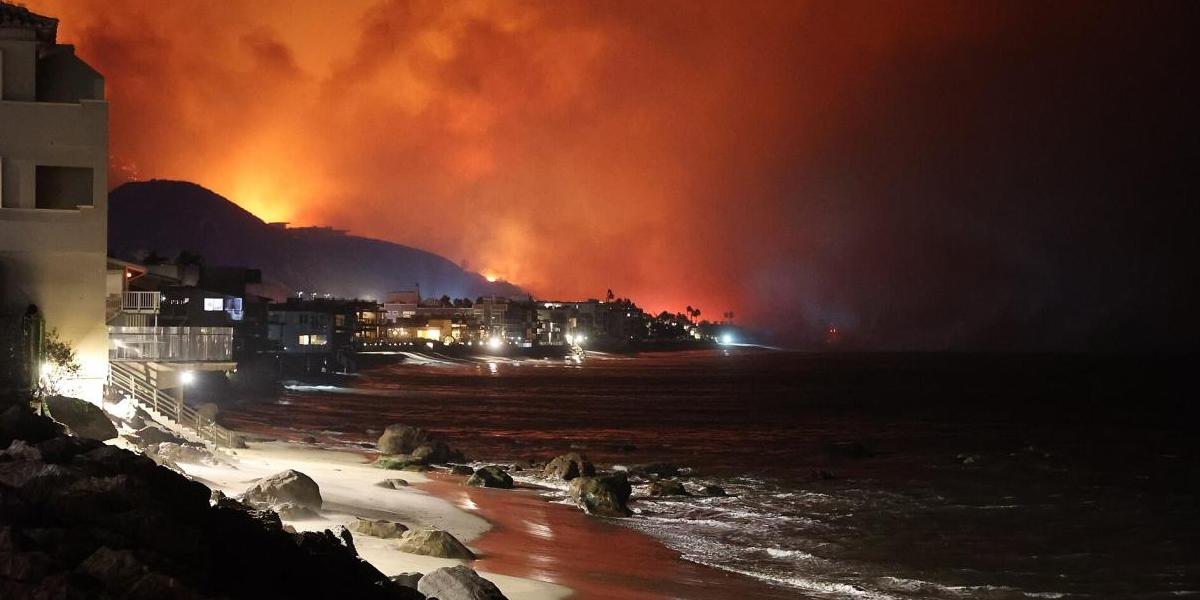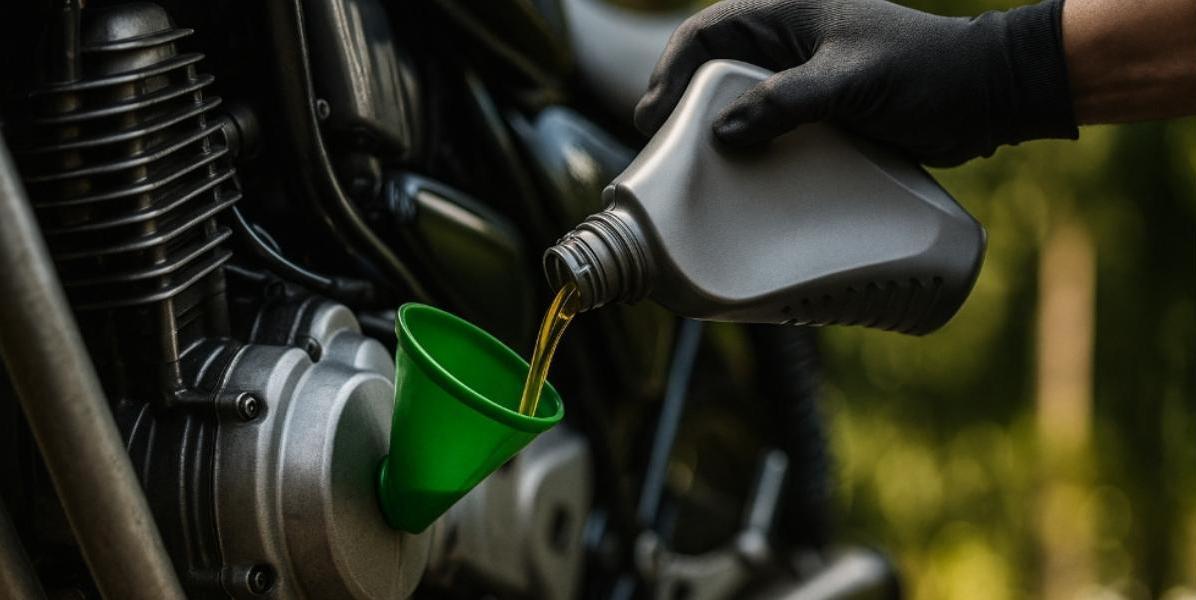The necessity of an actionable wildfire survival guide has become essential because wildfire seasons grow longer and more severe. This guide delivers complete instructions about wildfire origin points and U.S. frequency rates and prevention techniques and go-bag essentials and evacuation safety measures. We will demonstrate how ETENWOLF Vortex S7 and Flat Tire Repair Kit serve as critical emergency equipment which provides mobility and escape options during critical moments.
1. The process of wildfire development together with their common occurrence in U.S. territory.
Causes of Wildfires
Wildfires derive from human activity through 85% of cases because people fail to monitor their campfires and discard cigarettes and use equipment incorrectly and commit arson according to the Insurance Information Institute and National Park Service.
Other ignition sources include utility-related failures, faulty power lines, downed electrical equipment—and less commonly, lightning. (Source)
Climate and Environmental Conditions
· Long-term droughts combined with rising heat levels cause vegetation to become extremely flammable. Academic research together with NOAA demonstrates that wildfire occurrences and their severity have risen substantially because of climate change effects.
· The beginning of fire season has shifted earlier and its duration extends longer while burning more land than any previous period in history.
Wildland-Urban Interface Continues to Grow
The expansion of development into forested areas (the wildland-urban interface) increases the risk of wildfires for nearby communities. Evacuations become challenging because of limited access roads and rising traffic density.

2. Why Wildfires Are Increasing in the U.S.
· Human activity remains the primary ignition source—90% of fires.
· Climate change has created longer dry seasons and elevated fire intensity.
· Forest management practices through suppression without controlled burns have allowed fuel to accumulate during the past decades.
· Utility infrastructure failures, including power line contact with vegetation or equipment malfunctions, spark major fires.
The duration and intensity of wildfire seasons have expanded to include eastern states and southern regions which were previously considered low-risk.
🔥 Wildfire Frequency in the U.S.
· The National Interagency Fire Center documented that wildfires across the United States burned more than 3.25 million acres through 40,900 fires until mid-2025. (Source)
· The United States experienced extended and powerful wildfire seasons because of rising temperatures combined with dry seasons and windy conditions according to climate data. (Source)
🌆 Major Los Angeles Wildfire in January 2025
The large wildfire event which took place from January 7 to 31, 2025 included multiple fires in Greater Los Angeles.
· A destructive wildfire known as the Eaton Fire burned 14,000 acres in Altadena while destroying 9,400 structures and killing 18 people to become one of California's most destructive wildfires. (Source)
· During the Palisades Fire which spread through Pacific Palisades and Malibu the fire consumed 23,000 acres while destroying 6,800 structures and leading to 12 fatalities. (Source)
· The combination of strong Santa Ana winds at 100 mph pushed these fires to destroy or damage 18,000 buildings while forcing the evacuation of more than 200,000 people and resulting in at least 30 fatalities. (Source)
💰 Enormous Economic Impact
· The total property damage from the 2025 LA wildfire series reached between $28 billion and $53.8 billion thus becoming the most expensive natural disaster during the first half of the year. (Source)
· The EPA deployed 1,600 staff members to lead the largest hazardous material operation after toxic wildfire debris cleanup in agency history. (Source)
3. Wildfire Prevention Tips
· A home's safety perimeter requires regular upkeep through the removal of flammable brush and dead vegetation and tree branches surrounding buildings.
· It is necessary to follow all fire restrictions and bans during red flag days because these conditions include high winds and low humidity and extreme temperatures.
· People must never leave their campfires unattended before completely putting out the fire when they leave.
· Avoid discarding cigarettes, matches, or fireworks outdoors in vulnerable areas.
· Support prescribed burning and fuel reduction programs where allowed.
4. What to Prepare: Your Wildfire Survival Kit (“Go Bag”)
The go-bag recommendations from Ready.gov and FEMA and CAL FIRE and Wildfire LA should include the following:
· Water: At least 3 gallons per person per day (minimum 3 days).
· Non-perishable food: Three-day supply plus a can opener.
· Communication tools: Battery-powered or hand-crank radio, NOAA alerts.
· Lighting: Flashlight, headlamp, spare batteries.
· Health & hygiene: First aid kit, prescription meds, personal toiletries.
· Safety gear: N95 masks, goggles, gloves, long-sleeve clothing, leather boots.
· Navigation & documents: Local maps, copies of passports, insurance documents, cash.
· Emergency tools: Whistle, multi-tool, duct tape, plastic sheeting.
· Vehicle items: Jumper cables, shovel, kitty litter or sand for traction, fire extinguisher.
FEMA states that you need to have three personal-ready bags that should be refreshed regularly and are needed at home and work and in your vehicle.
5. What to Do During a Wildfire or Evacuation
· Evacuation should happen right away when authorities provide official alerts. Evacuation preparation demands the identification of at least two viable escape routes.
· You should quickly place your go-bag contents into your vehicle while adding your family members and pets and essential documents.
· Regular vehicle fuel checks together with tire condition inspections must be performed before evacuating.
· Drive cautiously: Avoid smoky areas, maintain visibility, heed roadblocks.
· You should activate fog lights or hazard lights while driving in low-visibility situations.
6. The Importance of Vehicle Maintenance—Especially Tires
Emergency situations during wildfires will make roads congested and damaged. Your ability to escape will be seriously impaired by a sudden tire blowout or deflation. Checking vehicle readiness includes:
· Fuel level
· Engine and brakes
· Tire pressure and condition—in hot, smoky, evacuating conditions, uneven pressure or slow leaks can lead to sudden failures
The correct tire pressure decreases blowout chances and enhances steering control while improving traction which becomes essential during emergency escapes.
7. ETENWOLF Vortex S7: A Wildfire Survival Tool
The ETENWOLF Vortex S7 Heavy Duty Tire Inflator Air Compressor serves as an emergency tool which enables users to maintain their mobility while staying safe during critical situations.
Key Features:
· 38,400 mAh Battery – Among the largest of any cordless inflator, supports inflating up to 33 F‑150 tires from 30 to 35 PSI on a single charge
· 260W Ultra-High Power Dual Motors – Inflate a large SUV tire in just 30 seconds, potentially saving crucial minutes during evacuation
· 160 PSI Max Output with ±1 PSI precision and auto shut-off – Ensures safe, accurate tire inflation
· Active Cooling System – Prevents overheating during continuous use
· 1000-Lumen LED with SOS Mode – Illuminates your surroundings and doubles as a signaling light in low-visibility or dangerous conditions
· USB‑C Fast Charging & Power Bank Function – Keep your phone powered up even if power is cut off
The S7 allows you to perform tire pressure repairs which enables uninterrupted travel during wildfires without needing outside assistance.

8. Handle Blowouts with ETENWOLF Flat Tire Repair Kit
The ETENWOLF Flat Tire Repair Kit lets you self-repair punctured tires without help so you can continue driving when assistance is not available in remote or congested areas.
The S7 working alongside the flat tire repair kit enables you to keep moving without getting stuck with a deflated tire.

9. How to Use the Gear in a Wildfire Scenario
· Make sure your go-bag along with your EV charger/backpack containing S7 and Flat Tire Kit stay properly stocked in your vehicle.
· Before leaving use the S7 to verify your tires have the recommended pressure level.
· Use the repair kit to seal the punctured tire before using the S7 to inflate it.
· Use the S7’s LED light for navigating through smoke or darkness while SOS mode functions as an alternative when needed.
· Make sure your phone stays charged by using the S7’s USB-C power bank to receive alerts and maintain communication.
10. Summary: Why Every Wildfire Kit Needs ETENWOLF Gear
| Scenario | Why S7 + Flat Repair Kit Matter |
| Emergency evacuation | Speedy tire checks and inflation keep you moving |
| Remote evacuation zones | No dependence on roadside help or power outlets |
| Low visibility or nighttime | Integrated 1000-lumen LED and SOS signaling |
| Flat tire during escape | Flat tire repair + instant reinflation |
| Power loss/outage | USB-C power bank keeps your communication alive |
✅ Final Takeaway
The United States experiences more frequent and more powerful wildfires due to changing climate patterns and human activities and dry weather conditions and urban growth. The best way to protect yourself from emergencies is by creating evacuation plans and building proper emergency kits while informing your family and checking your vehicle condition including tire readiness.
During emergency situations these two tools will provide you with essential independence. These tools empower users to repair flat tires speedily while navigating dangerous situations while maintaining communication channels.
Speed along with visibility and mobility become vital factors when wildfires hit. The right survival tools will get you moving as soon as time becomes precious.
The key to your wildfire survival begins with this guide that helps you remain safe while being ready for any situation.







Leave a comment
All comments are moderated before being published.
This site is protected by hCaptcha and the hCaptcha Privacy Policy and Terms of Service apply.